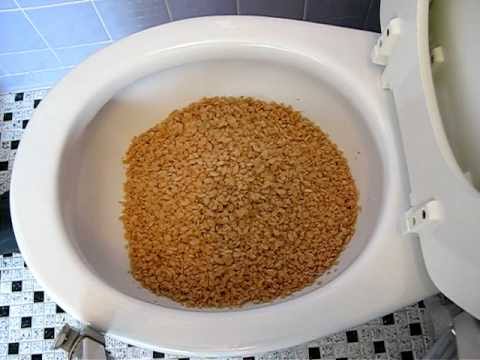Is it Common to Flush Food in the Toilet?
Is it Common to Flush Food in the Toilet?
Blog Article
Everybody is bound to have their private rationale when it comes to What Can Happen If You Flush Food Down the Toilet?.

Introduction
Many individuals are commonly confronted with the problem of what to do with food waste, specifically when it comes to leftovers or scraps. One usual inquiry that develops is whether it's fine to flush food down the bathroom. In this write-up, we'll delve into the reasons why people may take into consideration flushing food, the repercussions of doing so, and alternate approaches for correct disposal.
Reasons that individuals may take into consideration flushing food
Absence of recognition
Some individuals may not recognize the potential damage caused by flushing food down the commode. They might wrongly think that it's a harmless technique.
Convenience
Flushing food down the commode might seem like a quick and simple option to throwing away unwanted scraps, especially when there's no nearby trash bin available.
Laziness
In some cases, individuals might just pick to flush food out of large negligence, without taking into consideration the effects of their actions.
Consequences of flushing food down the commode
Ecological influence
Food waste that winds up in rivers can add to pollution and injury water ecological communities. Additionally, the water utilized to flush food can strain water resources.
Plumbing issues
Purging food can result in blocked pipes and drains pipes, creating expensive plumbing repair work and hassles.
Types of food that should not be purged
Fibrous foods
Foods with coarse structures such as celery or corn husks can obtain tangled in pipelines and cause clogs.
Starchy foods
Starchy foods like pasta and rice can absorb water and swell, bring about obstructions in pipelines.
Oils and fats
Greasy foods like bacon or cooking oils need to never be flushed down the toilet as they can strengthen and cause obstructions.
Appropriate disposal approaches for food waste
Utilizing a waste disposal unit
For homes outfitted with waste disposal unit, food scraps can be ground up and flushed via the plumbing system. Nevertheless, not all foods are suitable for disposal in this manner.
Recycling
Specific food product packaging materials can be reused, minimizing waste and lessening environmental influence.
Composting
Composting is an environmentally friendly method to throw away food waste. Organic products can be composted and utilized to enhance soil for horticulture.
The value of appropriate waste administration
Minimizing environmental injury
Correct waste administration techniques, such as composting and recycling, assistance lessen pollution and protect natural resources for future generations.
Protecting plumbing systems
By staying clear of the practice of flushing food down the bathroom, property owners can protect against costly plumbing repair services and keep the honesty of their plumbing systems.
Conclusion
In conclusion, while it may be tempting to flush food down the toilet for convenience, it is very important to comprehend the possible consequences of this action. By adopting appropriate waste management methods and getting rid of food waste properly, people can add to healthier plumbing systems and a cleaner setting for all.
FLUSH FOOD DOWN THE TOILET?
FLUSHING FOOD CAN CAUSE BLOCKED DRAINS IN YOUR HOME
All of the plumbing fixtures in your home are connected to the same sewer pipe outside of your home. This outdoor sewer pipe is responsible for transporting all the wastewater from your home to the Council sewer mains. Even small pieces of food that go down the kitchen sink can cause problems for your sewer. It should therefore be obvious that flushing larger bits of food, such as meat, risks a clog in either the toilet itself or the sewer pipes. Flushing greasy food is even more problematic because oil coagulates when it cools, coating the interior lining of your pipes.
THE TOILET IS NOT A BIN
Food isn’t the only thing that people shouldn’t be flushing down the toilet. People use the toilet to dispose of all kinds of things such as tampons, makeup wipes, dental floss, kitty litter and even underwear. Water goes to great lengths to educate residents about the high costs and stress placed on wastewater treatment systems simply from people flushing the wrong stuff down the toilet. It costs taxpayers millions of dollars each year, and homeowners thousands in blocked drain repairs.
FLUSHING FOOD IS A WASTE OF WATER
Flushing food is a waste of our most precious resource - water. In June this year Level 1 water restrictions were introduced to protect water supply from drought conditions. Much of New South Wales continues to be affected by prolonged drought with recent figures revealing up to 97 per cent of the state remains in drought. Depending on whether you have a single or dual flush toilet, every single flush uses between five and 11 litres of water. In the current climate this is a huge amount of water to be wasting on flushing food that should be placed in the bin (or better yet, the compost).
https://www.jabplumbingsolutions.com.au/blog/can-you-flush-food-down-the-toilet

As a fervent reader about Is it safe to flush food (especially rice) down the toilet?, I think sharing that excerpt was a good idea. Sharing is nice. Helping people is fun. Many thanks for taking the time to read it.
Check It Out Report this page